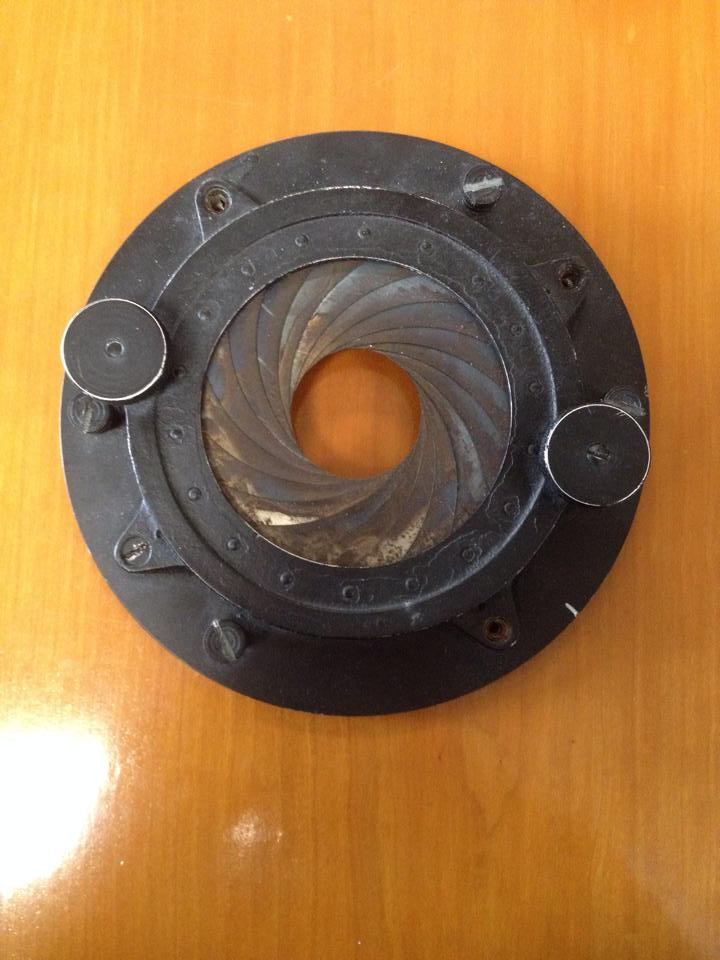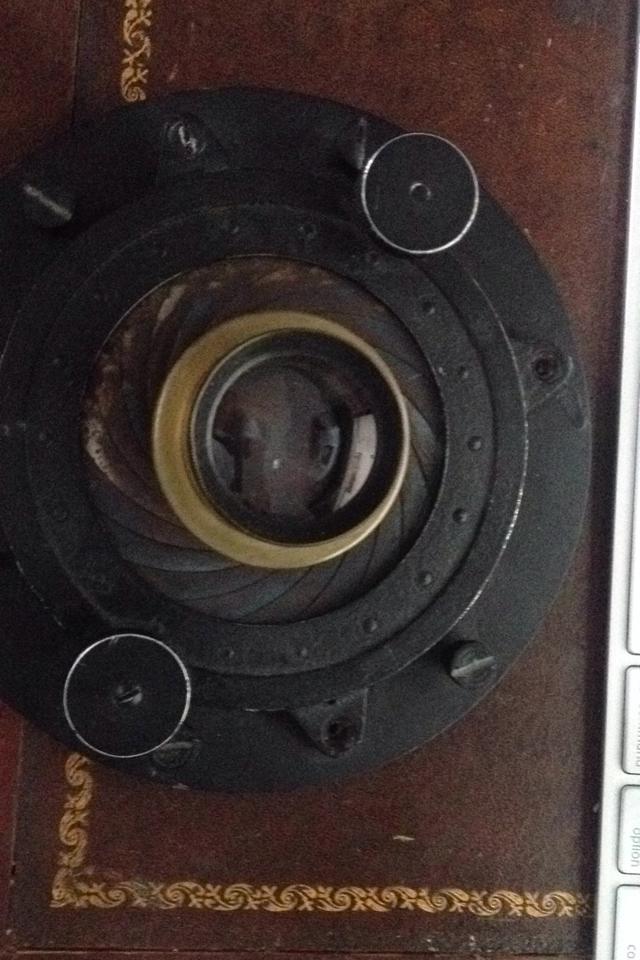All images by Eric Burke. Used with permission.
To the photographers who have never seen something like this, they may believe it to be a lens aperture of some sort. Surely, all of those blades would give you the creamiest bokeh ever to sit there and drool over. But in reality, it isn’t a lens aperture at all–but you can still get some really creamy bokeh.
The item above is a universal iris lens mount. They’re used in large format and collodion/wet plate photography. Essentially what it does is attaches to a camera body and allows you to mount pretty much any lens that you can get your hands on. It works by placing the lens in the center and turning the iris blades until the mount can hold the lens in place.
Eric Burke, the photographer who was selling the one in the photo above, told us that his sources say that they’re pretty rare. “…these would be used to mount a brass lens to an old wood camera. or now more of the modern day lenses for large format.” says Mr. Burke.
The lens mount has 18 blades, which would be positively insane if it were a lens aperture but again, it is not. More info, after the jump.
The mount holds the lens in place for the photographer and gives them lots of versatility with what they can experiment with. Usually, photographers use lenses that have waterhouse aperture plates, the same type that the Lomography Petzval lens uses.
It’s a pretty interesting concept and would be really interesting if it could work with most modern day cameras, but it would never happen. The lenses would all require manual focusing and manual aperture control. But a camera with a universal mount has been talked about in circles for many years. The closest that we will ever get to them though are mirrorless cameras.
Thanks to Eric for sharing these!



